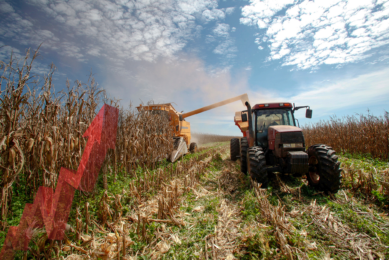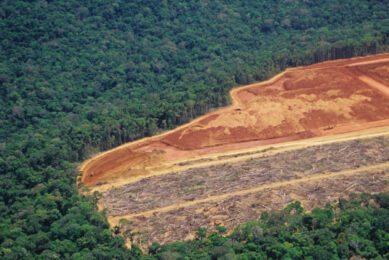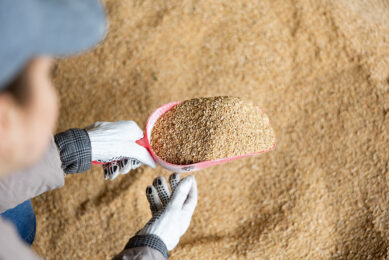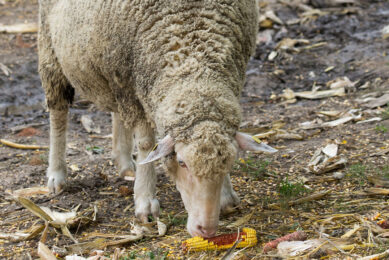Does your finished product shrink or grow?
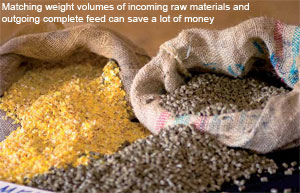
Do you know the key performance indicator which identifies the variation in tonnes of finished product leaving the mill, when compared with the tonnage of raw material which originally arrived? This is one vital question which far too many managers responsible for managing feed mills cannot answer accurately.
When 100 tonnes raw materials arrive at the plant and 1% is lost in the process loss it means that only 99 tonnes leave. So why is it happening, how can it be identified and how can it be corrected? There can be a number reasons why a mill loses stock or suffers shrink:
- Losses due to moisture reduction in processing;
- Unauthorised removal of feed from site;
- Failure to account for movements of material properly;
- Material being spoilt and thrown away;
- Dust emissions from inefficient control equipment.
The last four can be dealt with through good management of maintenance, production and administration. Moisture loss, the most significant factor, is more complex and needs further explanation.
None of the aforementioned, however, will be obvious, unless the overall reconciliation of material movements is done on a regular basis.
Moisture loss
If moisture changes during production are examined, it is possible to create profiles for feed through the process. Figure 1 shows a typical feed passing though the feed production process and indicates the main points at which moisture changes. Without correcting action, mills can suffer between 0.5 and 1.5% moisture losses. With net profit margins in some feed companies being as low as 1 to 2 %, this factor alone could influence whether or not that company returns a profit or loss, so it really is a vital part of mill management control.
The diagram highlights the effects of grinding and cooling on moisture losses. The first is almost impossible to prevent. It can be reduced by maintaining grinder beaters, screens and the air system in good condition, but losses will still be experienced. Cooling is an evaporative process so moisture reduction is essential, but there may be times when cooling is too efficient and over drying is experienced.
The only way to fully correct this effect is to add water. The difficulty is ensuring that the water is retained, and that the pellet press is capable of pelleting the higher moisture material.
Since the late 1990’s the Akzo Nobel emulsifier Bredol has been used to assist in correcting the problem, in addition to providing other significant production benefits. It not only allows the retention of higher moisture than pure water, it also allows more water to be added than the press would normally be able to handle. This is particularly important in hot dry climates. One recent full scale production trial in Australia demonstrated that if water levels as high as 3% were added with emulsifier, the pellet press could easily process the material, and the subsequent evaporation of excess water actually cooled the product below the ambient air temperature by 2°C. The end product moisture was then slightly higher than the calculated target from raw material moisture levels.Figure 2 shows the progression which can be achieved from zero water addition, pure water addition and increased water addition + emulsifier.
Balancing the differences
So how does a mill identify the balance of gains and losses in a mill? At its most basic, if a mill wishes to simply look at moisture variations then the testing of raw material and finished product moistures can provide results which could indicate the trend in gains or losses. There are, however, serious issues connected with moisture testing. When a mill is looking for movements of 0.5-1%, the only completely reliable method is to oven test samples.
Quick testing methods are a valuable indicator, particularly in live production testing, however NIR, NIT, Capacitance and Microwave testing is only as good as its calibration set up. When compared with oven tests it is sometimes possible to experience variations as large as 1%. Results like this can hide the trends being looked for. Quick testing heat balances have an even greater potential variance, if repeated tests are carried out before the equipment cools down. Loading a small sample carefully onto the plate takes time. The sample is also drying rapidly during this loading operation. The end result is that the sample may be compromised before the test begins. In this case sample preparation should be done on the plate away from the machine after it has been zeroed.
Correct sampling
No moisture results can be representative unless sampling procedure is correctly followed. The only sample which will deliver accurate information is one which has been taken once the cooler has discharged it’s own maximum volume, and optimum conditioning is taking place. Samples which are taken too early in the production run will always deliver a low moisture result. If different operators regularly take samples at different stages of the run, the end result will be variable moisture results.
Some mill computer systems have a capability to track despatched feed volumes and relate this back to raw material weighing records. In this way any variation as a result of the process will be identified. Care has to be taken if the product is screened at loading, as this will clearly affect the quantity available to despatch.
The simplest and most basic method of monitoring looks at raw materials received at a mill, the quantity in stock and finished products being sent out. It is relatively easy to monitor if you are measuring all incoming material over a weighbridge and sending finished products out in the same way. The only other factor is the starting and finishing stock of materials in the mill. This is potentially a variable area as you need to measure the contents of bulk bins, but given an experienced operator and some degree of measurement, which can be as simple as a tape measure with a weight on the end, this will provide reliable information. Monthly reconciliation is the longest period which should be used as figures can be investigated and acted upon quickly. The best mills do it weekly. The calculation looks like this: Opening stock + received goodsClosing stock + dispatched goods –Stock gained or lost
Changing nutritional values
There is an argument that instead of looking at stock variations, raw material nutritional values can be changed to factor out moisture losses. This is a very risky strategy. If an overall approach is taken, it assumes that all raw materials will loose moisture at the same rate during grinding. Raw material properties and financial values are then changed in the formulation computer to allow for this.
The reality is that materials behave in different ways during grinding, and some will loose moisture more readily than others. Even if materials are treated separately, separate deliveries can behave differently during grinding. For example, hard and soft wheats or sorghum with the same moisture level will grind differently and release more or less moisture. Generally feed grains are not differentiated, so any figures to correct moisture losses are probably going to be guesses.
The only way to arrive at a close finished product nutritional result which matches the target based on analysis of incoming raw materials, is to bring the moisture back to its target level. If 100 tonnes arrives at a mill, 100 tonnes should leave.
The calculation is very simple. For example, every 100,000 tonnes produced in a mill with average raw material cost at €100 per tonne, a 1% loss in moisture represents a profit reduction of €100,000. Despite this many mills either do not look at this factor at all and the losses are hidden. Others will reconcile once or twice each year. This simply tells you that you have had a long term problem and it’s too late to correct it. Regular checks and fast action will provide a big benefit to your company’s profit line.




